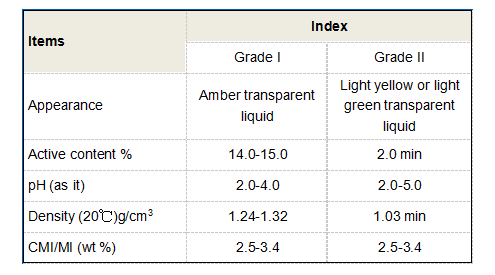coagulant flocculant
Coagulants and Flocculants Key Players in Water Treatment
Water is an essential resource for life, but its quality can often be compromised by pollutants, sediments, and microorganisms. To ensure the availability of clean and safe water, various treatment processes are employed, among which coagulation and flocculation stand out as critical steps. These processes involve the use of coagulants and flocculants, which play a vital role in the efficient removal of suspended solids and contaminants from water.
Understanding Coagulation and Flocculation
Coagulation and flocculation are two interrelated processes used primarily in water and wastewater treatment. Coagulation is the first step, where chemical agents, known as coagulants, are added to the water. These coagulants neutralize the electrical charges that stabilize suspended particles, allowing them to clump together or coagulate. Common coagulants include alum (aluminum sulfate), ferric chloride, and polyaluminum chloride.
Once coagulation has occurred, the resulting particles, called flocs, are often too small and too numerous to settle out of the water on their own. This is where flocculation comes into play. Flocculation involves the gentle stirring or mixing of water to encourage the formation of larger aggregates or flocs, which can then be removed more easily through sedimentation or filtration. Flocculants, which are often long-chain polymers, enhance this process by binding smaller particles together and promoting the growth of larger floc aggregates.
The Role of Coagulants and Flocculants in Water Treatment
The application of coagulants and flocculants has significant benefits in the context of water treatment. Firstly, they improve the clarity and quality of the water by effectively removing turbidity and color caused by suspended solids, such as dirt, silt, and organic matter. This is crucial not only for aesthetic reasons but also for compliance with health standards and regulations.
coagulant flocculant

Additionally, the use of coagulants and flocculants can aid in the removal of pathogens and harmful microorganisms from water. By aggregating these contaminants into larger flocs that can be more easily filtered or settled out, the overall microbiological quality of the water is enhanced. This is particularly important for drinking water treatment plants, where safeguarding public health is a primary objective.
Moreover, the application of coagulants and flocculants can lead to cost savings in the treatment process. By improving the efficiency of sedimentation and filtration, these chemicals can reduce the volume of sludge generated and lower the overall operational costs. Moreover, they allow for the possibility of recycling water for various purposes, further promoting sustainability within water management practices.
Choosing the Right Coagulant and Flocculant
Selecting the appropriate coagulant and flocculant for a specific application is crucial for achieving optimal treatment results. Factors such as water chemistry, the nature of contaminants, and desired outcomes must be considered. For instance, in certain scenarios, using a combination of different coagulants can yield better results than using a single chemical.
Additionally, ongoing research and development are leading to the creation of more efficient, eco-friendly alternatives. Biodegradable flocculants and coagulants derived from natural sources are gaining attention for their reduced environmental impact.
Conclusion
In conclusion, coagulants and flocculants are indispensable tools in the realm of water treatment. They significantly enhance the removal of suspended solids and microorganisms, leading to cleaner and safer water. As environmental challenges related to water scarcity and pollution continue to grow, the importance of understanding and utilizing these chemical agents effectively cannot be overstated. Through innovation and informed choices, we can ensure that our water treatment processes remain efficient, cost-effective, and environmentally friendly for generations to come.
-
Pbtc Scale InhibitorPBTC: A Scale Protector for Industrial Water TreatmentNewsAug.05,2025
-
Organic Phosphonate: An Efficient Defender in the Field of Scale InhibitionNewsAug.05,2025
-
Hydrolyzed Polymaleic Anhydride: Green Pioneer in Scale Inhibition FieldNewsAug.05,2025
-
PAPEMP Polyamino Polyether Methylene Phosphonic Acid For SaleNewsAug.05,2025
-
Flocculant Water Treatment: A Pioneer in Purification in the Field of Water TreatmentNewsAug.05,2025
-
Benzyl Isothiazolinone: An Efficient and Broad-Spectrum Antibacterial Protective GuardNewsAug.05,2025





